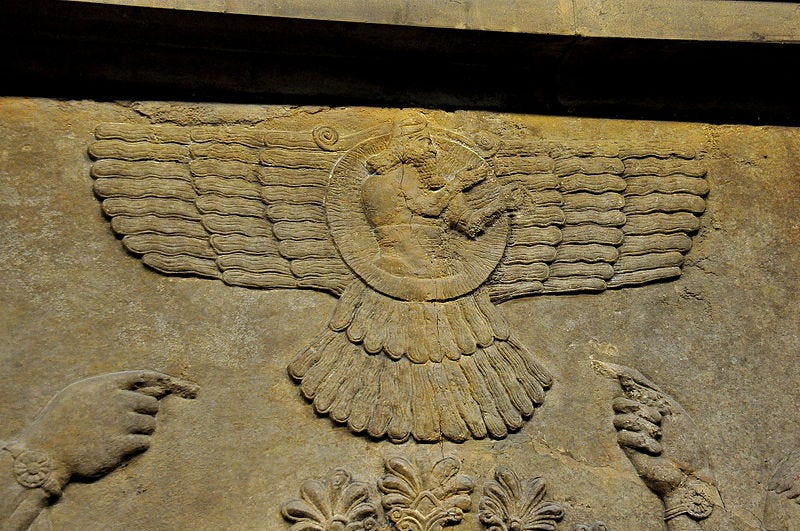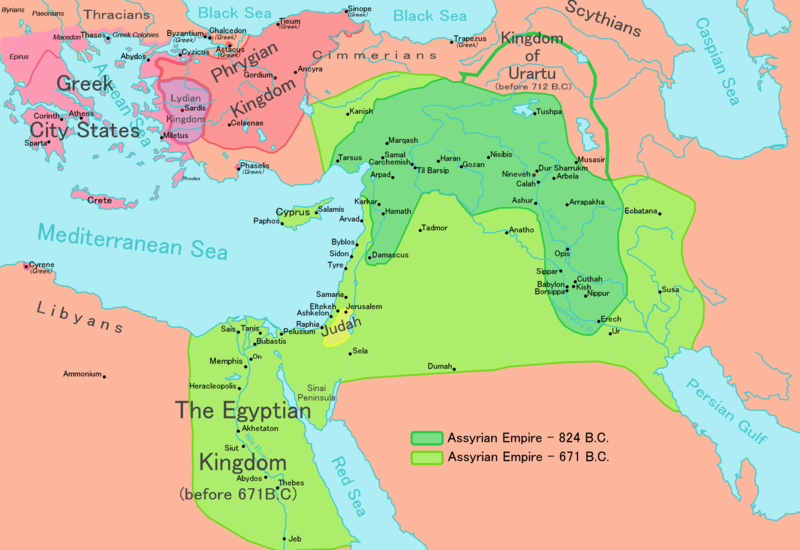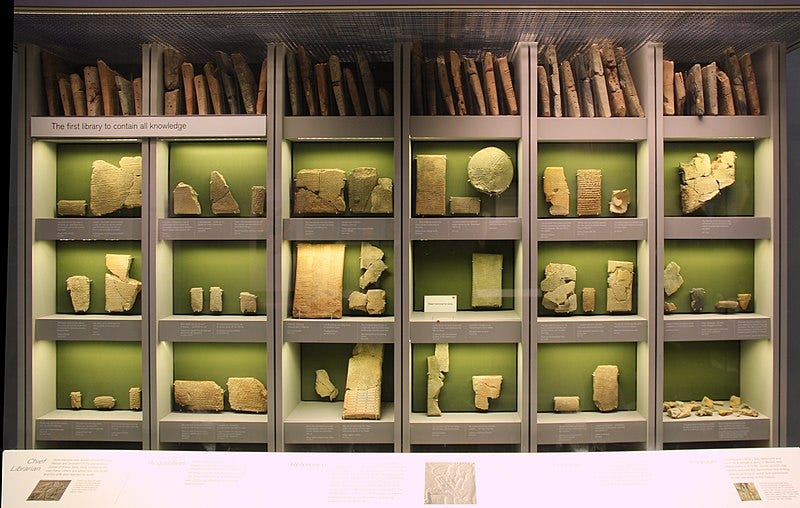Unraveling the Assyrian Legacy: Foundations for Future Empires
Written on
The concept of an empire often invokes images of vast territories and impressive infrastructures. The Roman Empire is famous for its extensive road systems, while the Mongol Empire spanned from Asia to Europe. The British Empire, characterized by its railways, also comes to mind. Each of these empires made significant strides in human advancement while simultaneously inflicting destruction on their adversaries.
What, then, was the key to their remarkable success? Was it effective governance, advanced military technology, or perhaps a willingness to uplift some while subjugating others? In essence, building an empire presents a paradox. How could the Mongols, a relatively small group of nomadic tribes, conquer well-established civilizations like China, Russia, and Persia? Similarly, how did traders from the British Isles manage to dominate a quarter of the globe?
To answer these compelling questions, we must travel back to an ancient city in northern Iraq, a place now largely in ruins but once thriving: Assur. This city was the cradle of the first true global empire in human history—the Assyrian Empire. At its zenith, this empire encompassed the territories of modern Iraq, Iran, Israel, Syria, Lebanon, parts of Turkey, and Egypt.
The Assyrian Empire set a precedent for future empires. Understanding how a relatively small population could control such vast regions requires an examination of its history.
Assyrians: The Roots of Power

The term "Assyrian" is derived from the city of Assur, named after a war deity who served as the chief god of the Assyrians. During the early dynastic period (2900 BC to 2350 BC), the Sumerians inhabited Assur, which later became part of the Akkadian Empire under Sargon of Akkad, whom the Assyrians regarded as their ancestor.
During the early phases of Assyrian history, known as the Old Assyrian Period (2025 BC to 1364 BC), Assur emerged as a significant trade hub for the region's most valuable resource: tin. This was followed by the Middle Assyrian Period (1363 BC to 912 BC), and then the Neo-Assyrian Era (911 BC to 609 BC), during which the empire reached its peak.
The city of Assur flourished under Shamsi-Adad I (1808 BC to 1776 BC), who expanded its influence and established trade colonies in Anatolia. The prosperity gained from these ventures would later serve the Assyrians well. However, they faced a setback when the rising power of Mitanni conquered Assur in 1430 BC, leaving the city in ruins.
The Assyrians learned from this defeat, realizing the necessity for a stronger military to defend their honor. In 1363 BC, Ashur-Ubalit, a high priest of Assur, took power and liberated the Assyrians from Mitanni's control. He was the first to adopt the title "Sar," meaning king.
Ashur-Ubalit's ascension marked a pivotal moment in Assyrian history. Soon, neighboring kingdoms like Egypt and the Hittites recognized Assyria as a formidable power. Ashur-Ubalit’s expansionist policies transformed Assur from a city-state into a territorial entity.
However, military might alone was insufficient; the Assyrians employed strategic diplomacy, formed alliances, and executed population transfers to solidify their control.
Constructing an Empire: The Role of Conquest

Under Ashur-Ubalit's leadership, military campaigns targeted tribes and kingdoms that had previously defeated the Assyrians. He forged alliances with powerful entities, such as the Babylonians, even marrying his daughter to the Babylonian king to ensure lasting peace.
During Shalmaneser I's reign (1273 BC to 1244 BC), the Assyrians avenged their earlier defeat by conquering Mitanni and razing its capital, Washukanni. Military expansion and diplomacy became essential strategies for subsequent Assyrian rulers.
Assyrian governors were expected to maintain resources for an army, and subjugated kingdoms were obligated to provide soldiers. Failure to comply was seen as rebellion. This reliance on local forces was echoed in future empires, including the Persian and Roman Empires, which depended on conquered peoples for military support.
As the Assyrian Empire expanded, the realization dawned that waiting for external troops during crises was dangerous. To counter this, Emperor Tiglath-Pileser III (745 BC to 727 BC) established a standing army, often regarded as one of the first professional militaries. His innovations included a sophisticated network of roads for efficient military movement and communication, which later empires, including the Romans, would inherit and extend.
The Assyrians were not only fierce warriors but also military innovators. They utilized sheepskin to transport war chariots across rivers and developed early siege engines that were pivotal in breaching fortified cities.
Understanding that sheer force was not the sole path to victory, Assyrian rulers employed psychological tactics, including brutal punishments to instill fear in their enemies. They meticulously documented their military campaigns, using these records as propaganda to bolster their reputation.
In addition, Tiglath-Pileser III implemented a systematic deportation strategy, relocating conquered populations to fracture loyalties and minimize the risk of rebellion. This practice continued with subsequent Assyrian leaders, facilitating the introduction of new cultural influences across the empire.
The Assyrians demonstrated that effective governance and citizen satisfaction were as crucial as military conquest.
Constructing an Empire: The Pursuit of Peace

Successful empires have historically thrived by keeping their populations satisfied. The Assyrians balanced fear with an emphasis on education and knowledge, which they deemed essential for imperial strategy.
The Assyrian libraries stand as some of the earliest examples of organized record-keeping, with their rulers placing a high value on literacy and scholarship. Esarhaddon (681 BC to 669 BC) aimed to gather knowledge and trained his son, Ashurbanipal, to become a scribe. Upon succeeding his father in 668 BC, Ashurbanipal constructed the largest library of the ancient world, the Royal Library of Ashurbanipal, which may have inspired the Great Library of Alexandria.
The Assyrians were also skilled engineers, best known for their advanced irrigation systems, which significantly improved agricultural practices in Northern Mesopotamia. Their innovations laid the groundwork for later empires to follow.
During the Neo-Assyrian period, women enjoyed legal rights comparable to men. They could inherit property, engage in business, and participate in governance. The Assyrians thus displayed progressive attitudes toward women's rights relative to other ancient cultures.
The Assyrian merchants thrived due to the extensive road networks that facilitated trade. They maintained property rights and private ownership, even in an era when state control was predominant.
The Assyrians established methods for transporting heavy materials across great distances, showcasing the importance of logistical capabilities in empire-building. They illustrated that the well-being of citizens was as vital as military dominance.
Ultimately, the Medes and Babylonians would sack Nineveh, the Assyrian capital, in 612 BC, leading to the empire's dissolution. However, the lessons left by the Assyrians regarding the dual nature of empire—both its ferocity and its capacity for innovation—continue to resonate through history.
As novelist Jessica Cluess aptly noted: “Gods dream of empires, but devils build them.”
Have you enjoyed exploring the legacy of the Assyrians? Would you like to learn more about the remarkable library created by King Ashurbanipal?
For further reading, check out this intriguing story:
The Story of the Largest Library in the Ancient World Before Alexandria
With over 30,000 texts, this library may have served as an inspiration for the Library of Alexandria.